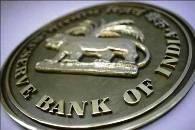 | « Back to article | Print this article |
 The government finally appears to be in sync with the Reserve Bank of India (RBI) on the broader macro management.
The government finally appears to be in sync with the Reserve Bank of India (RBI) on the broader macro management. Indian policy makers have been a unique breed until this policy in saying that monetary tightening will check inflation without affecting growth. Now, the very idea of monetary tightening is to affect growth in order to check inflation.
That understanding seemed to be missing when the Budget was announced - it was based on a 9 per cent GDP growth.
The assumption seemed to be from la-la land and few bought it. Growth is also a casualty of the lack of sufficient actions by the government to ease the chronic supply constraints.
Navigating the Indian economy must be like manoeuvring a super tanker with inadequate and faulty instruments.
For an economy that will hit $2 trillion in size in the current fiscal year, policy makers do not appear to have a good handle on, for example, the shifting trends in the industrial sector, labour market, and, most importantly, inflation dynamics.
That inflation is high and an important issue is not new. But the relevant inflation rate and what the central bank is targeting for the effectiveness of its monetary stance cannot be mere academic discussions.
The answers to these questions have an important bearing on how effectively the central bank can check inflation and manage inflationary expectations.
At the very outset, the RBI's unique focus on wholesale price index (WPI) inflation, which captures mainly input prices, is also one of the contributors to higher inflation expectations.
That in no way takes away the impact of higher global commodity prices and the too-loose-for-too-long fiscal policy that also boosted consumer spending.
In 2010, for example, inflation rates in Thailand, South Korea and Malaysia according to the producer price index (PPI) were well above consumer price index (CPI) inflation rates, despite the reliance on currency appreciation as well in some cases.
It is nobody's case that the gap will be similar in India's case - we just don't know since there is no reliable CPI measure.
But central banks in these countries did not get everyone to focus on the higher PPI inflation. Doing that would have undermined their policy, but that is precisely what is happening in India.
The RBI concludes that higher WPI-based core (non-food manufactured goods) inflation reflects that aggregate demand is strong enough to allow firms to pass on higher input costs.
But that is similar to what is seen in these other economies, but their central banks reach a different conclusion for monetary policy purposes due to their focus on the CPI.
It is more than likely that the pass- through of higher input prices into final consumer prices in India is not of the same magnitude as indicated by WPI-based core inflation. But we do not have a good grasp of that, and that potentially raises the risk of over-tightening.
The two charts show that WPI-based core inflation appears to be strongly correlated with global crude oil prices but, surprisingly, it is not affected by changes in non-agriculture GDP growth.
This was true even in the last tightening cycle; the only time WPI-based core inflation fell in recent years was when commodity prices collapsed in the post-Lehman global financial crisis. It had nothing to do with the tightening by the RBI.
In fact, the tightening by the RBI has delivered little check on WPI-based core inflation despite higher rates and slowing growth because its inflation measure is basically much more sensitive to global commodity prices than is typically the case with CPI inflation.
A faulty thermometer gives incorrect readings irrespective of the bitterness of the medicine.
WPI-based core inflation has an important bearing on the RBI's policy rate decisions but, surprisingly, it doesn't offer any guidance or forecast to anchor expectations.
The issue of the relevance of WPI-based core inflation becomes even more important as in a recent speech (after the policy review on 3 May), the RBI governor states, "The headline inflation index is the wholesale price index, and that does not, by definition, reflect the consumer price situation."
In the same speech, we are also told that targeting CPI-based core inflation rather than headline inflation is not a feasible solution since an inflation index, with half the basket of food excluded from it, hardly reflects the reality.
Given the questions over the measurement of inflation, no one should be surprised if inflation expectations cannot be properly anchored.
Ironically, for a central bank that is trying to enhance its inflation-fighting credentials, the RBI is still indicating "upside risk" to its March 2012 inflation forecast, which is at a seven-year high.
Forecasting is fraught with risks but inflation expectations cannot be well anchored when the RBI itself does not appear confident about its forecast and how it communicates it.
Unless global commodity prices are corrected, the most likely outcome will be lower growth and higher inflation.
The RBI's approach raises the risk of a hard landing if it wants to be serious about checking inflation, while a soft landing will prompt an overshoot on inflation, again.
The author is senior economist at CLSA, Singapore. The views expressed are personal